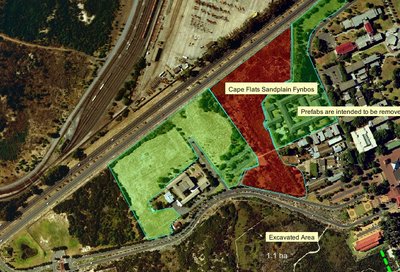NEW LIFE SCIENCE BUILDING

Hi Everyone
I attended a meeting which presented to the staff the concepts behind the new Life Sciences building. Much of this presentation was about building efficiency and flexibility of design. The issue that the new building is of an International design of glass and wavy roof at least conceptually and operationally has been inspired by buildings at the University of Queensland. The building is intentionally very modern, and for Middle East Airports and Conference Centres they look great, but personally I think clasical and individual designs are more suitable for Universities. When I visited Germany and the quaint gothic town of Marburg I was appalled that their University could build such a hideous edifice of glass. I am not saying that this building is hideous, it mostly certainly is not, but whether people will really take notice of another airport-like building along M10, I really doubt. The BCB department will occupy the first floor and the roof above the computer labs will be where the plants can be kept on the roof. We have already lost one major computer server through a roof leak - this does not sound very practical to me.
I raised the issue about the need for an Environmental Impact Assessment (EIA) as per the new regulations. I was assurred the university have passed the documents concerning the new EIA to our law faculty for guidance. Exactly what does this mean? Is UWC looking for a loophole to avoid having to undertake an IEM, I really do not know? For UWC to gain respect nationally and internationally, it needs to be a socially responsible institution, promoting democracy, and to have concerns for people and the environment while maintaining high educational standards. The quality of the university is the quality of its staff, the quality of the students it produces, its engagement with society, rather than having modern buildings of glass.
For the rest of this posting I will indicate exactly why this site is so sensitive. I got Dr Pat Holmes from the City of Cape Town to check this out.
1) The Cape Town Environs have the highest species extinction rates in the world due to loss of natural habitat.
2) The Cape Town Lowlands (including the Cape Flats) have high species richness, uniqueness and as you move across the landscape a high turnover of species. The world's total population of species can literally be contained with a few hectares.
3) The closest similar Cape Flats Sandplain Fynbos vegetation has been lost over the last few years (e.g. Century City) and this has increased the relative conservation value of this particular remnant.
4) The vegetation removed to make way for this building was classified by CCT Biodiversity Strategy as Cape Flats Sandplain Fynbos - of which there is very little left in good condition and only 1% is conserved, well under the 10% required under IUCN and Convention on Biodiversity to which South Africa is a signatory. There is to little tyo meet conservation targets and is defined as irreplaceable.
5) The Sandplain Fynbos vegetation types are the second most critically endangered vegetation type group within the world famous Cape Floral Region - an area that has biodiversity packing that is about the highest in the world.
6) Sandplain Fynbos vegetation types occurs on an acidic, low nutrient substrate, making it sensitive to any nutrient runoff and to any construction employing concrete (it will make it alkaline).
7) The Cape Flats vegetation on UWC Campus was identified as far back as 1987 as one of the top ten most important floral sites for conservation in a study undertaken by the Botanical Society.
8) The site represents a gradient from Coastal (Dune) Thicket to Sandplain Fynbos (referred to as an Ecotone) making it one of only two remnants of natural vegetation left in Cape Town.
9) The conservation plight of the Cape Lowlands has achieved huge global coverage (e.g. David Attenborough in his documentaries on the State of the Planet - used the Cape Lowland Fynbos to illustrate species extinction through loss of habitat.
10) Sandplain Fynbos vegetation is virtually impossible to re-establish as a functional ecosystem since it has a number of edaphic and other conditions (e.g. microrhiza) that makes it impossible to simply transplant adult plants. Harvesting of seed and storing of the top soil are the best methods for re-establishing this type of vegetation after a disturbance - but if the soil nutrient levels are elevated or the pH changed it will be more difficult to restore the ecosystem functionality.
11) The proposed site is very natural and remarkably free of alien grass species, which are usually one of the first signs of increased nutrient and human-disturbance in Sandplain Fynbos.
I have prepared a map showing in Red the sensitive areas, and in Green areas that have little or no ecological value, there is quite a bit of it. If a developer proceeds with developing a sensitive site as identified under the EIA regulations of NEMA the penalties are not particularly high, BUT the court could stop the development and instruct the site to be restored, and that would be expensive. Undertaking an EIA will incur delays in the construction of the building, but realistically, were the University to go the EIA route, there is every chance that the new Life Science Building will be given the green light if the footprint is kept fairly small (the latest plans put it at about 1ha) but a biodiversity offset may be required (probably a financial cost in the region of R1-5 million) to secure another area with similar biodiversity status. What is not in UWC’s favour is the amount of available land that is not ecologically sensitive and that it built the School of Government on another part of sensitive Cape Flats Sandplain Fynbos in the last five years.
